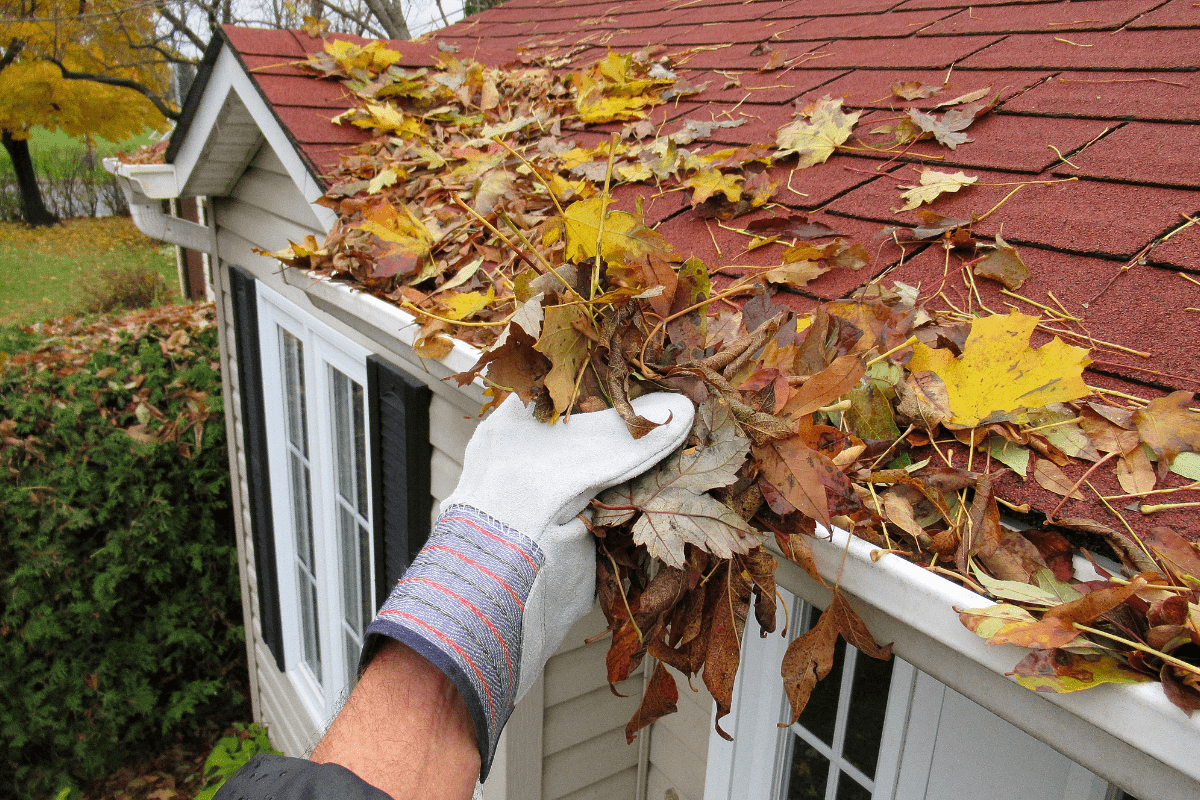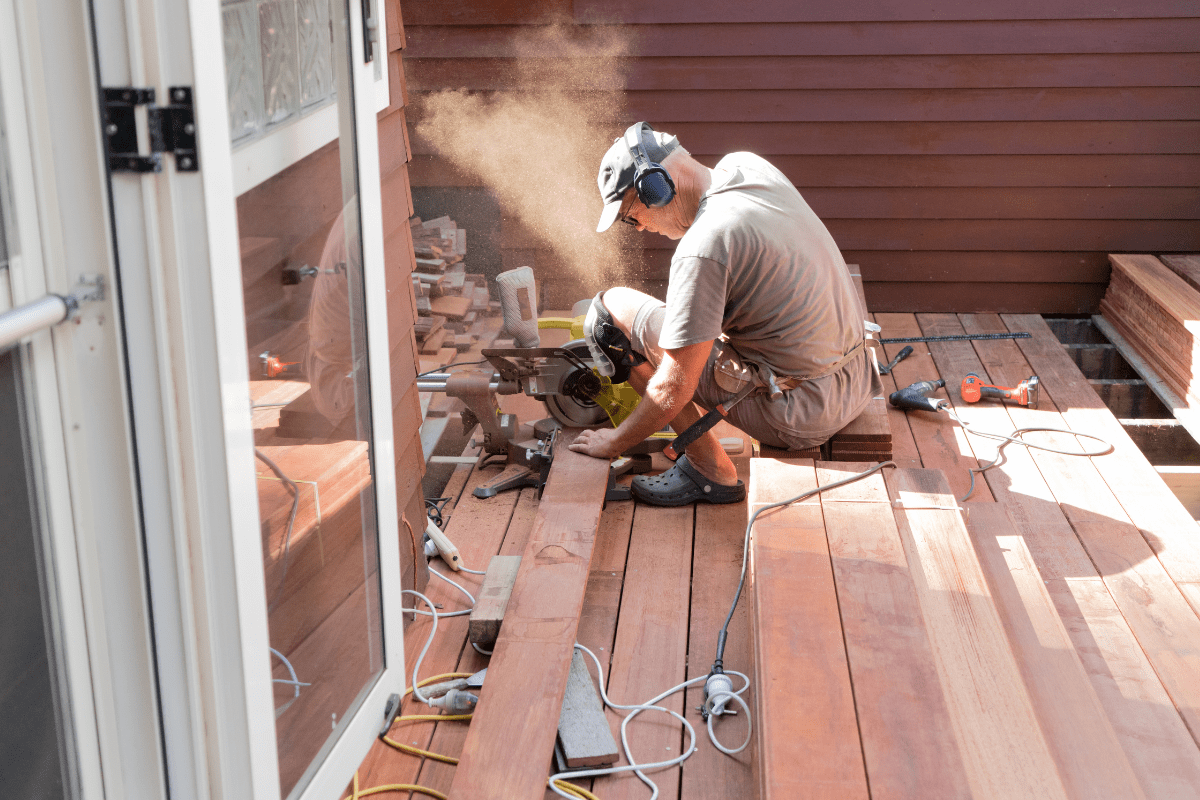That first crisp morning when you can see your breath doesn't just mean pumpkin spice season has arrived… it's your home's wake-up call to prepare for winter's harsh realities. While 38% of homeowners dealt with unexpected roof damage in 2022, and countless others faced burst pipes, frozen faucets, and furnace failures, the good news is that most winter disasters are completely preventable with some strategic fall preparation. Think of it as an investment: spending a weekend on maintenance tasks now can save you thousands in emergency repairs later, plus you'll actually get to enjoy winter instead of frantically calling repair services at 2 AM.
Your home's first line of defense against winter
Your roof and gutters work harder during winter than any other season, which makes fall the absolute perfect time to get them ready. I learned this the hard way when a small missing shingle turned into a $3,000 ice dam disaster because I thought "I'll deal with it in spring."
Roof inspection that actually matters
Fall really is the ideal time to repair your roof before winter storms hit. Once snow and ice arrive, even simple repairs become dangerous and expensive, and asphalt shingles need temperatures between 40-85°F to install properly.
You don't need to channel your inner daredevil to inspect your roof effectively. Start with a good pair of binoculars and walk around your house, looking for obvious problems. Check for missing or damaged shingles, any weird-looking growths (hello, mold), and examine the areas around vents, chimneys, and skylights where flashing could be loose or cracked.
If you spot anything concerning, or if your roof hasn't been professionally inspected in the past two years, it's time to call in the experts. Yes, it costs money upfront, but it's way cheaper than dealing with water damage when that small problem becomes a big leak.
Gutter maintenance that prevents disasters
Here's something most people don't realize: if your gutters stay clogged, water doesn't just overflow harmlessly onto your landscaping. It spills directly onto the ground next to your foundation, and that water has to go somewhere. That somewhere is often your basement, your crawl space, or worse, it slowly undermines your foundation over time.
Fall gutter cleaning isn't a one-and-done task, especially if you have trees nearby. You'll probably need to clean them multiple times as leaves continue falling. The good news is that each cleaning gets easier as fewer leaves remain on the trees.
Before you climb that ladder, though, let's talk safety. Alert a family member or neighbor that you'll be cleaning gutters and set a specific check-in time. Seriously, this isn't being dramatic. Ladder accidents happen to experienced people all the time.
Here's your step-by-step approach:
- Clear all leaves and debris
- Check downspout alignment and flow
- Inspect brackets for damage
- Test drainage with garden hose
If your house is particularly tall, the terrain is tricky, or you just don't feel comfortable on ladders, hiring professionals for gutter cleaning is money well spent. It typically runs $150-300, which is a bargain compared to foundation repairs.
Winterizing outdoor plumbing before freeze damage
This is probably the most time-sensitive task on your entire fall maintenance list. When temperatures drop to 28°F or below, water in your outdoor faucets and supply pipes can freeze, expand, and create enough pressure to burst pipes. The repair bills for burst pipes easily run into thousands once you factor in water damage.
The tricky part about winterizing is timing. You want to do it before the first hard freeze, but if you do it too early in areas with mild fall weather, you might still need your outdoor water for lawn care or cleaning projects.
Start by disconnecting and draining all garden hoses. This part requires a bit of technique: extend your hose to its full length, then raise one end to waist level and walk the length of the hose hand-over-hand. This forces out trapped water that could freeze and damage the hose itself. Store hoses somewhere they won't freeze, like a garage or basement.
Next, you need to shut off the interior water supply to your outdoor faucets. Look for the shut-off valve on the interior wall, usually directly behind where your outdoor faucet is located. Turn it clockwise until water stops flowing completely.
Now go back outside and open the outdoor faucet to drain any remaining water from the pipes. If your system has a bleeder cap (it's a small 3/8-inch brass cap on the side of your supply valve), open it briefly to let air into the pipes and help force out trapped water.
For extra protection, install foam faucet covers that cost about $5-10 each. They're effective down to about 30°F, and honestly, they're cheap insurance against expensive problems.
If you have a sprinkler system, that needs winterizing too. Professional services typically charge $60-130, which often beats the cost and hassle of renting an air compressor and doing it yourself, especially if you're not familiar with the process.
Heating systems and fire safety prep
Nothing ruins winter faster than a furnace that quits working on the coldest day of the year, or worse, a house fire that could have been prevented with basic maintenance.
HVAC tune-up scheduling
Scheduling your annual heating system tune-up is honestly the most important item on your entire fall maintenance checklist. Professional HVAC technicians inspect critical components, clean necessary parts, and tighten electrical connections to ensure everything runs efficiently. More importantly, they identify small problems before they turn into expensive emergencies.
The average HVAC tune-up costs around $99, while emergency furnace repairs easily run $500-2,000 or more. Plus, trying to find an HVAC technician during the first cold snap of winter is like trying to find a plumber on Christmas morning… good luck with that.
Book your appointment in September or early October, before everyone else realizes they need the same service. While you're waiting for the technician, there are several things you can handle yourself.
Change your furnace filter and stock up on several more for the winter months. A clogged air filter forces your furnace to work harder than necessary and can actually cause system failures. Mark your calendar to change filters monthly during heating season.
Also, take a walk around your outdoor heat pump or AC unit and clear away any debris, fallen leaves, or items that might restrict airflow. Test your thermostat to make sure it's working properly and replace the batteries if needed.
Fireplace and chimney safety
If you're planning cozy fires this winter, listen up: fireplace maintenance isn't optional. Fireplaces create combustible deposits that can burn at over 2,000 degrees Fahrenheit. That's hot enough to destroy your chimney liner and potentially set your house on fire.
Professional chimney inspection should happen annually for all fuel types, whether you burn wood, use gas logs, or have a pellet stove. Cleaning is typically needed every 2-3 years for average family use, but that varies based on how often you actually use your fireplace.
The best time to schedule chimney services is during summer, when availability is better and you're not competing with everyone else who suddenly remembered they need their chimney cleaned. If you haven't done this yet, call now.
For your DIY prep, test your damper to make sure it opens and closes properly. Check that your fireplace screen is in good condition and will actually contain sparks. If you burn wood, make sure you have seasoned firewood that's been dried for 1-2 years. Fresh or green wood creates more creosote buildup and burns inefficiently.
Clear any decorative items, newspapers, or other combustible materials away from your hearth area. I know it looks cozy to have a basket of kindling right next to the fireplace, but fire doesn't care about your interior design choices.
Dryer fire prevention
Here's a sobering statistic: 92% of house fires between 2010 and 2014 were caused by dryers, and 26% of those were sparked by lint buildup. This is completely preventable with basic maintenance that takes maybe 20 minutes.
Clean your lint filter after every single load. I'm not kidding about this. Even if it doesn't look particularly linty, clean it anyway. Lint is sneaky and builds up in ways you can't always see.
At least once a year, inspect and clean your dryer vent ductwork. Start by disconnecting the dryer and checking the vent hose for lint buildup. Then go outside and check your exterior vent. If air isn't flowing freely, or if you see lint accumulation around the outside vent, it's time for a deep cleaning.
For complex ductwork or if you're not comfortable doing this yourself, professional dryer vent cleaning services are available and worth the cost for peace of mind.
Interior systems and safety checks
While outdoor preparations get most of the attention, your indoor systems need love too, especially since you'll be relying on them more heavily during winter months.
Water system maintenance
Your water heater works overtime during winter, so fall is the perfect time to show it some attention. Flushing the tank removes sediment buildup that can reduce efficiency and shorten the unit's lifespan. Test the temperature and pressure relief valve to make sure it's functioning properly, and check around the base of the tank for any signs of leaks.
Don't forget about your pipes. Clean slow drains now with hot water and a plunger before they become completely blocked during holiday cooking season. Check under all sinks and around appliances for any signs of leaks. Small drips can turn into big problems when pipes are under stress from temperature changes.
If you have pipes in crawl spaces, basements, or other unheated areas, add insulation around them now. Pipe insulation is cheap and easy to install, but it's way more pleasant to do this project when it's 60 degrees outside instead of 20.
Test your sump pump if you have one. Pour a bucket of water into the sump pit to make sure the pump kicks on and drains properly. Winter brings more precipitation, and you want to know your basement protection is working before you need it.
Safety system updates
Testing smoke and carbon monoxide detectors should happen monthly according to the National Fire Protection Association, but let's be honest… most of us test them when they start chirping at 3 AM because the battery is dying.
Fall is a great time to get back on track with this. Test all detectors and replace batteries in non-hardwired units. Replace smoke detectors that are over 10 years old and carbon monoxide detectors over 6 years old. The dates are usually printed on the back of the unit.
While you're thinking about safety, review your family's fire evacuation plan. Winter fires are particularly dangerous because windows may be harder to open and outdoor conditions make escape more challenging.
If you use a humidifier during dry winter months, clean it thoroughly to prevent mold and mildew buildup. Replace filters according to manufacturer guidelines, typically once a year. Your lungs and your houseplants will thank you when the dry winter air hits.
Weatherization and exterior prep
The little details of weatherproofing can make a huge difference in your comfort and energy bills all winter long.
Energy efficiency improvements
Walk around your house and check the weatherstripping around doors and windows. Look for gaps, cracks, or areas where the stripping has pulled away or deteriorated. Replacing weatherstripping is one of the best bang-for-your-buck energy improvements you can make.
While you're at it, grab a tube of caulk and seal up gaps around windows, doors, and anywhere pipes or wires enter your house. These small gaps add up to significant heat loss over the course of a winter.
Inspect your home's exterior siding for any areas that are cracked, missing, or loose. It's much easier to repair these issues in fall weather than when it's freezing outside. Small problems with siding can let moisture in, which leads to much bigger problems over time.
Give your windows some attention too. Summer leaves them coated with pollen, grime, and general debris that can actually affect how much light gets into your house during the darker winter months. Clean them with gentle soapy water and microfiber towels. While you're cleaning, check that windows open and close properly and that locks are working.
Landscape and equipment preparation
Your trees and shrubs need some fall attention to prevent winter damage. Walk around your property and trim any dead branches that could fall during winter storms. Dead branches are particularly dangerous because ice and snow add weight that healthy branches could handle but dead ones cannot.
Rake and dispose of leaves regularly, not just for appearance but for lawn health. A thick layer of leaves left on grass over winter can create conditions for lawn diseases and pest problems come spring.
If you're still fertilizing your lawn, plan your final application for about three weeks before your last mowing of the season. Fall fertilization helps grass roots strengthen for winter and gives you a head start on spring growth.
Now's the time to prep your equipment for the seasonal transition:
- Clean lawn mower thoroughly
- Sharpen blades and change oil
- Disconnect and store batteries properly
- Test snowblower operation and fuel
- Check tire chains for damage
- Stock ice melt and sidewalk salt
Store lawn equipment properly to prevent rust and moisture damage. For gas-powered equipment, either run the tank empty or add fuel stabilizer before storage.
Emergency preparedness and timing
Winter emergencies are stressful enough without scrambling to find basic supplies in the dark during a power outage.
Winter emergency kit essentials
Assemble your winter emergency kit before you need it. Include flashlights, battery-powered radio, extra batteries, and portable phone chargers. Stock a first aid kit and any essential medications. Plan for at least three days of water and non-perishable food per person in your household.
Don't forget extra blankets, warm clothing, and winter-specific items like ice melt, rock salt, and snow removal tools. If you have a fireplace, make sure you have dry kindling and matches stored safely.
Your month-by-month action plan
September priorities focus on scheduling and starting big projects. This is when you should book your HVAC tune-up, begin roof and gutter inspections, and start any exterior maintenance that requires good weather.
October is action month. Complete your gutter cleaning, winterize outdoor plumbing when temperatures start approaching freezing, and finish landscape preparation. This is also when you should complete any remaining exterior projects before weather becomes a factor.
November is for final preparations and emergency planning. Assemble your emergency kit, do final safety system checks, and wrap up any remaining outdoor work. This is also a good time to test your backup heating sources if you have them.
Professional service decision points
Some jobs are worth hiring professionals, either for safety reasons or because the consequences of mistakes are too expensive. Call experts for electrical issues with heating systems, structural roof damage, gas appliance problems, complex plumbing repairs, and any tree removal near power lines.
The key to getting good professional help is booking early. Everyone realizes they need these services at the same time, so availability gets limited and prices go up as demand increases.
Wrapping up your winter prep
A weekend spent on fall maintenance really can save you thousands in winter repairs and give you the confidence to actually enjoy the season instead of worrying about the next expensive surprise your house might throw at you.
Start with the highest-priority exterior tasks since weather will eventually make them impossible to complete safely. Focus on preventing water damage first, then heating system reliability, then everything else. Remember, the goal isn't perfection… it's preventing the big, expensive problems that can ruin your winter and your budget.
The best part about tackling fall maintenance systematically is that it becomes routine. Each year gets easier because you know what to expect, you have the right tools, and small problems get caught before they become disasters. Your future self will thank you every time you flip that thermostat and hear the furnace kick on reliably, or when the first big storm hits and water flows exactly where it's supposed to instead of into your basement.
Take it one task at a time, ask for help when you need it, and remember that every bit of prevention now pays dividends all winter long.





